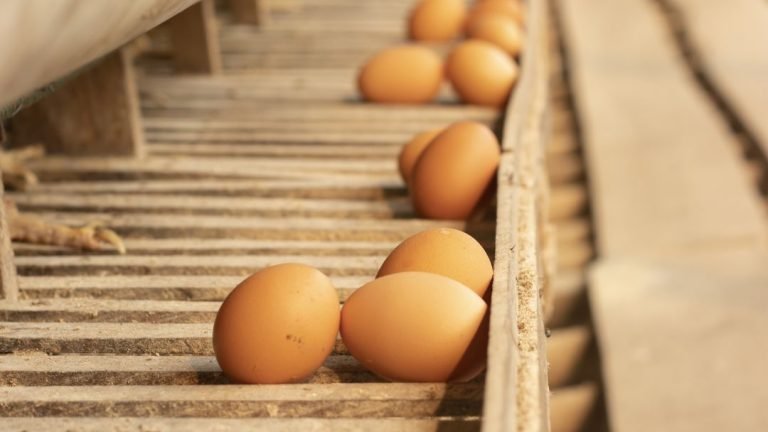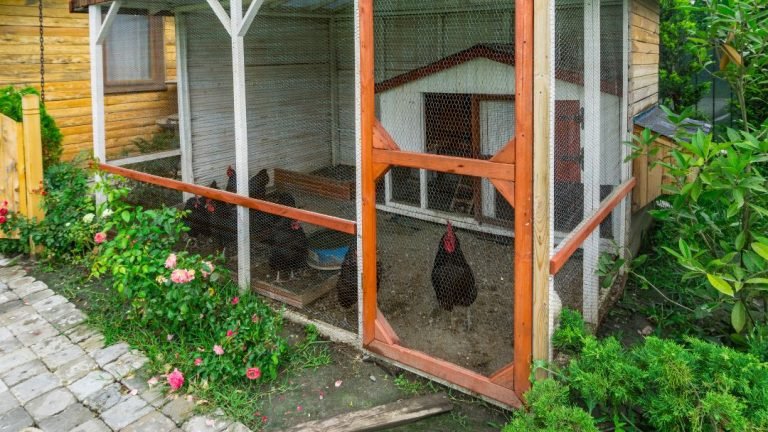Compared to naturally incubating eggs through broody hens, egg incubators are more convenient to use. It has a higher hatchability rate. You can hatch a larger of eggs at a time. Most importantly, it gives you better control over temperature and humidity.
Maintaining the right chicken egg incubator temperature and humidity settings is crucial for successful hatching. New chicken keepers may not have precise knowledge regarding the ideal temperature and humidity level. Keep scrolling to learn about it.
Why Choosing Temperature And Humidity Important For Egg Incubation?
One of the primary attributes for successful hatching is the incubation temperature. After all, it affects the growth performance of chicks once they are hatched.
According to the research of Cambridge University, if the temperature is too low, more number of male embryos will die.
In contrast, too high temperatures will cause a good number of female embryos to die.
Another crucial factor is humidity. A decent humidity must be ensured to let chicks break through the membrane and hatch eggs.
The membrane will be excessively dry if the humidity level is too low. Hence, chicks will struggle to tear the membrane and fail to hatch.
Besides, the humidity level can’t be too high. Otherwise, it will cause excessive moisture.
This will disallow the incubator to evaporate moisture naturally, negatively affecting the hatchability.

What Is The Ideal Temperature Settings For An Egg Incubator?
Ensuring a perfect temperature is crucial when it comes to producing healthy chicks at an increased hatching rate.
The ideal temperature setting for hatching chicken eggs in an incubator can be anywhere from 99.5°F (37.5°C) to 101.5°F (38.611°C).
Generally, still air incubators need a little higher temperature than forced air incubators.
The temperature can’t be more than 100.5°F (38.056°C) for forced air incubators and 101.5°F (38.611°C) for still air incubators.
Otherwise, it will cause a higher number of crippled and deformed chicks. Their embryos are less likely to survive.
| Incubator Type | Ideal Temperature |
|---|---|
| Forced Air Incubators | 99.5°F (37.5°C) to 100.5°F (38.056°C) |
| Still Air Incubators | 100.5°F (38.056°C) to 101.5°F (38.611°C) |
What Is The Ideal Humidity Settings For An Egg Incubator?
When an embryo develops gradually, oxygen can pass through and let moisture evaporate from the egg.
Higher humidity means increased moisture. The hatching process will not be successful unless an egg loses an ideal moisture level.
Chicken eggs need around 60% humidity for the first 18 days of incubation and 65% to 70% humidity for the final three days during hatching.
The eggs need a little higher humidity for the last three days to ensure the egg shells have enough moisture. This allows the chicks easily break the shells and come out easily.
How To Keep The Humidity Constant In An Egg Incubator?
Egg incubators come with a simple tray at the bottom to keep water. It helps maintain a consistent humidity in the inner area of the incubator
This higher humid atmosphere inside disallows the cultured cells of eggs from drying out gradually.
Don’t make the water tray or pot full. Instead, keep the level half full. Otherwise, it will create too much moisture. This is unnecessary during the first 18 days.
Just check the water level every day when you turn the eggs. If the water level drops to less than ½ level, carefully add warm tap water to the ½ level.
However, pour enough water into the tray or pot without overfilling it during the final three days of hatching.
Extra water is needed to increase the moisture level, creating higher humidity inside the incubator.
How To Keep The Temperature Constant In An Egg Incubator?
Having a good quality thermostat in your incubator is crucial to keep the temperature constant.
Some incubating devices have an automated adjustment system. They can regulate and maintain their own optimal temperature without human touch.
Many manual egg incubators are also available. They allow you to adjust the temperature automatically.
Regardless of your option, the incubator thermostat must work properly to ensure a consistent temperature.
The thermostat plays a critical role in controlling and monitoring an incubator’s temperature.
If the thermostat doesn’t work consistently, it can cause too high or too low a temperature. It will negatively affect the embryo development and hatching process.
How To Know Egg Incubator Has The Ideal Level Of Temperature?
Modern egg incubators come with a built-in thermometer that shows the current internal temperature of the incubator on the digital display.
Manufacturers mainly use digital thermometers in the latest egg incubators. It has special heat sensors and a thermistor to sense the temperature quickly and show it on display.
They generally show ±1° difference in a few cases. But the built-in thermometer may sometimes not show the exact accurate temperature for various reasons.
It can be a low or dead battery, wrong placement, malfunctioning, or other environmental factors.
In such situations, using a high-quality thermometer to measure an accurate temperature is best.
Besides, it allows you to compare the built-in thermometer and external thermometer. This gives a true picture of how accurate the temperature reading is.
How To Know Egg Incubator Has The Ideal Level Of Humidity?
The latest egg incubators come with an integrated digital hygrometer to measure the amount of water vapor inside the incubator.
But if you are using an old egg incubator or your incubating device doesn’t show a proper humidity level, you can use a separate digital hygrometer to know the exact humidity.
Place the hygrometer carefully in a particular location where eggs or other objects don’t obstruct it. Keep it at least for 10-15 minutes to get a precise result.
If the humidity level is too low or too high, you may need to adjust the humidity level inside the incubator. Add or remove water from the water reservoir or adjust the ventilation.
What Factors Affect Temperature And Humidity Levels In A Chicken Egg Incubator?
Some attributes can directly or indirectly affect a chicken egg incubator’s temperature and humidity levels. The followings are the most common ones:
01. Ambient Temperature
What is your room’s air temperature where you kept the egg incubator?
Is it too hot or too cold? If so, the incubator temperature may fluctuate.
02. Ventilation
Ensuring proper ventilation is essential to let enough amounts of fresh oxygen enter and carbon dioxide escape in the same manner.
Many latest egg incubators have a built-in fan to prevent temperature variation from top to bottom. It is vital for cabinet incubators.
The main advantage of a fan is keeping the temperature even throughout the incubator and eliminating temperature gradient for all practical purposes.
03. Egg Positioning
How do you place eggs inside the incubator? How much space do you maintain between two eggs? Keeping at least 1-1.5-inch gaps between two eggs is necessary.
When you keep eggs very close to each other, there will be a lack of appropriate airflow. It may lead to hot spots and cold spots in the incubator.
A fluctuation in temperature will cause uneven development and even death of the developing embryos.
04. Egg Turning
How often do you turn the eggs inside the incubator? Rotating the eggs at least five times a day is essential. It will ensure proper embryo development.
More importantly, the embryo will receive fresh nutrients and oxygen from consistent rotation.
Regularly not turning the eggs will create hot spots in some areas. This will result in uneven distribution of temperature that will affect the overall embryo development.
05. Water Evaporation Rate
How fast the water from the incubator’s water tray or pot evaporates? It should be neither too slow nor too fast.
The water evaporation rate should be approximately 0.6%-0.7% per day or 0.025%-0.03% per hour.
When it is too fast, the humidity level will drop rapidly. In contrast, a slower water evaporation rate will increase the humidity level too much, affecting the hatching process.
06. Incubator Type
Not all egg incubators are made equally. Their construction structure and design vary.
Many high-quality options are well-insulated to keep the heat and humidity levels constant.
They are less vulnerable to thermal leakage. Hence, you are less likely to see cold spots, localized condensation, and energy losses.
But forced air incubators need less insulation than still air incubators as they already have a built-in fan to circulate the air.
An incubator without sufficient insulation may result in significant heat loss. The humidity level may drop or increase based on the surrounding environment.
07. Altitude
Where have you installed the egg incubator? Is it on the ground floor or a few floors above?
The height of the incubator can affect the temperature and humidity level of the incubator.
High-altitude locations have much colder spots than lower-altitude locations because of the low air pressure. It will cause faster water evaporation and affect the humidity level.
Pro Tips When Setting Temperature and Humidity in a Chicken Egg Incubator
You have already learned how to achieve perfect temperature and humidity inside an incubator. The followings are a few bonus tips.
01. Regular Maintenance
It is essential to perform regular maintenance tasks for the egg incubator to ensure consistent functionality.
One of the essential tasks is cleaning the incubating device between hatches. Use a white vinegar water mixture (1:9) to clean the inner area through a spray.
Then scrub gently with a soft brush. Finally, wipe everything with a fresh cloth. Avoid using any chemical cleaners as they may melt Styrofoam.
02. Proper Location
Another important job is selecting the correct location. Choosing a place that is stable, dry, and free from drafts is a good rule of thumb.
Keep the incubator in a room where the temperature doesn’t change constantly.
If you fail to maintain a stable temperature, use Thermoelectric cooling technology.
It can help you maintain precise temperature control in the incubator. This technology uses a heat pump to remove heat from the incubator and maintain a consistent temperature.
03. Use Humidity Pumps
Does your egg incubator have too high or low a humidity level? You can use Humidity Pumps to remove or add vapor.
The Humidification systems have increased pressure atomizing nozzles to evaporate moisture and maintain proper humidity ranges quickly.
Wrapping UP
Getting the temperature and humidity settings right in a chicken egg incubator can be the difference between success and failure in hatching healthy chicks
With the proper techniques and attention to detail, you can create the optimal conditions for your eggs to develop and hatch into healthy chicks, ensuring a successful and rewarding experience.




